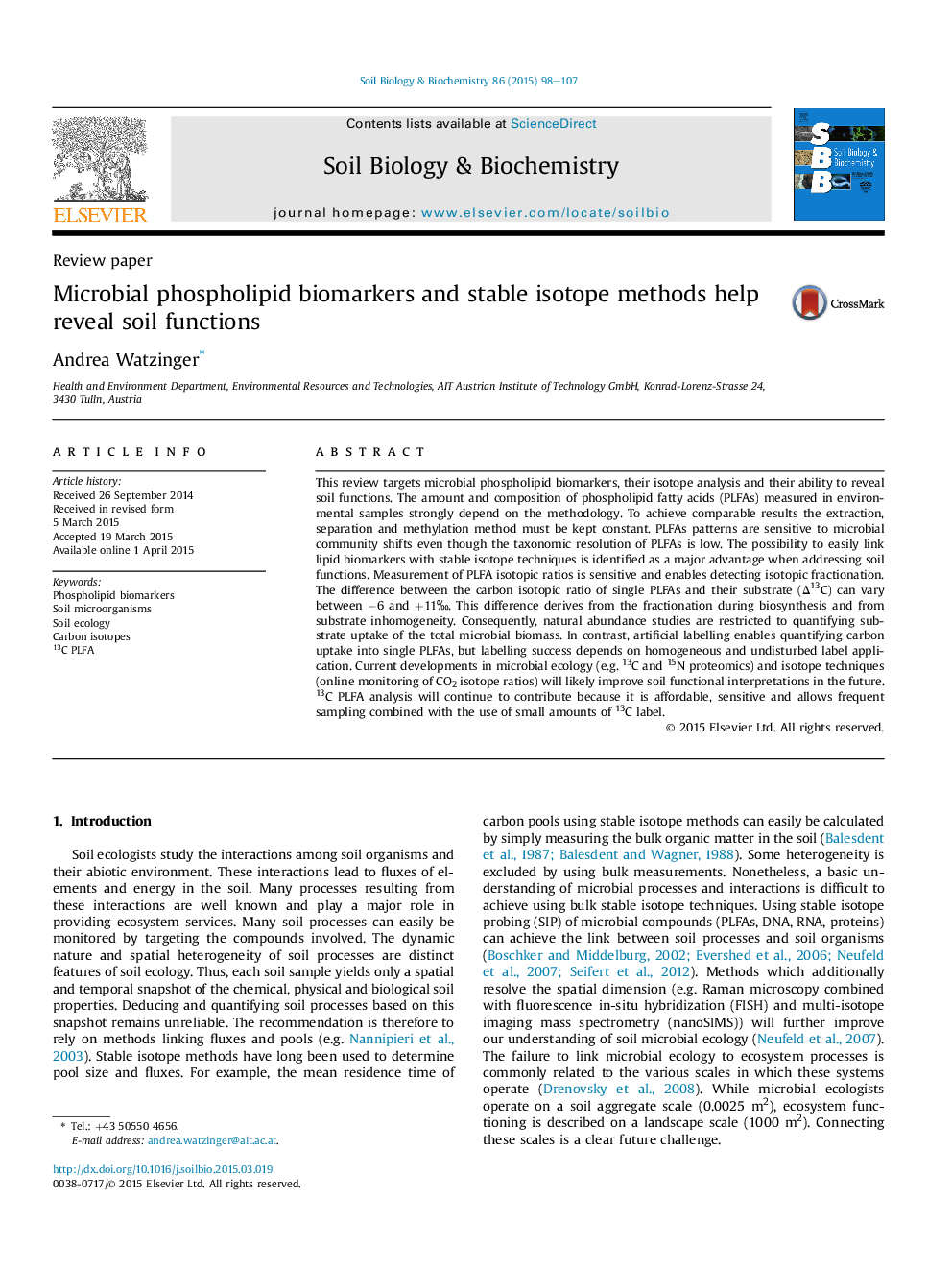| کد مقاله | کد نشریه | سال انتشار | مقاله انگلیسی | نسخه تمام متن |
|---|---|---|---|---|
| 2024525 | 1542598 | 2015 | 10 صفحه PDF | دانلود رایگان |
• PLFA patterns are sensitive to environmental change.
• Linkage of PLFAs and stable isotope methods enables functional interpretation.
• Natural labelling experiments are restricted due to natural discrimination (Δ13C) of single PLFAs.
• Uptake of naturally labelled substrate in the total microbial biomass can be quantified.
• Artificial labelling enables quantification of label uptake into single PLFAs.
This review targets microbial phospholipid biomarkers, their isotope analysis and their ability to reveal soil functions. The amount and composition of phospholipid fatty acids (PLFAs) measured in environmental samples strongly depend on the methodology. To achieve comparable results the extraction, separation and methylation method must be kept constant. PLFAs patterns are sensitive to microbial community shifts even though the taxonomic resolution of PLFAs is low. The possibility to easily link lipid biomarkers with stable isotope techniques is identified as a major advantage when addressing soil functions. Measurement of PLFA isotopic ratios is sensitive and enables detecting isotopic fractionation. The difference between the carbon isotopic ratio of single PLFAs and their substrate (Δ13C) can vary between −6 and +11‰. This difference derives from the fractionation during biosynthesis and from substrate inhomogeneity. Consequently, natural abundance studies are restricted to quantifying substrate uptake of the total microbial biomass. In contrast, artificial labelling enables quantifying carbon uptake into single PLFAs, but labelling success depends on homogeneous and undisturbed label application. Current developments in microbial ecology (e.g. 13C and 15N proteomics) and isotope techniques (online monitoring of CO2 isotope ratios) will likely improve soil functional interpretations in the future. 13C PLFA analysis will continue to contribute because it is affordable, sensitive and allows frequent sampling combined with the use of small amounts of 13C label.
Journal: Soil Biology and Biochemistry - Volume 86, July 2015, Pages 98–107
